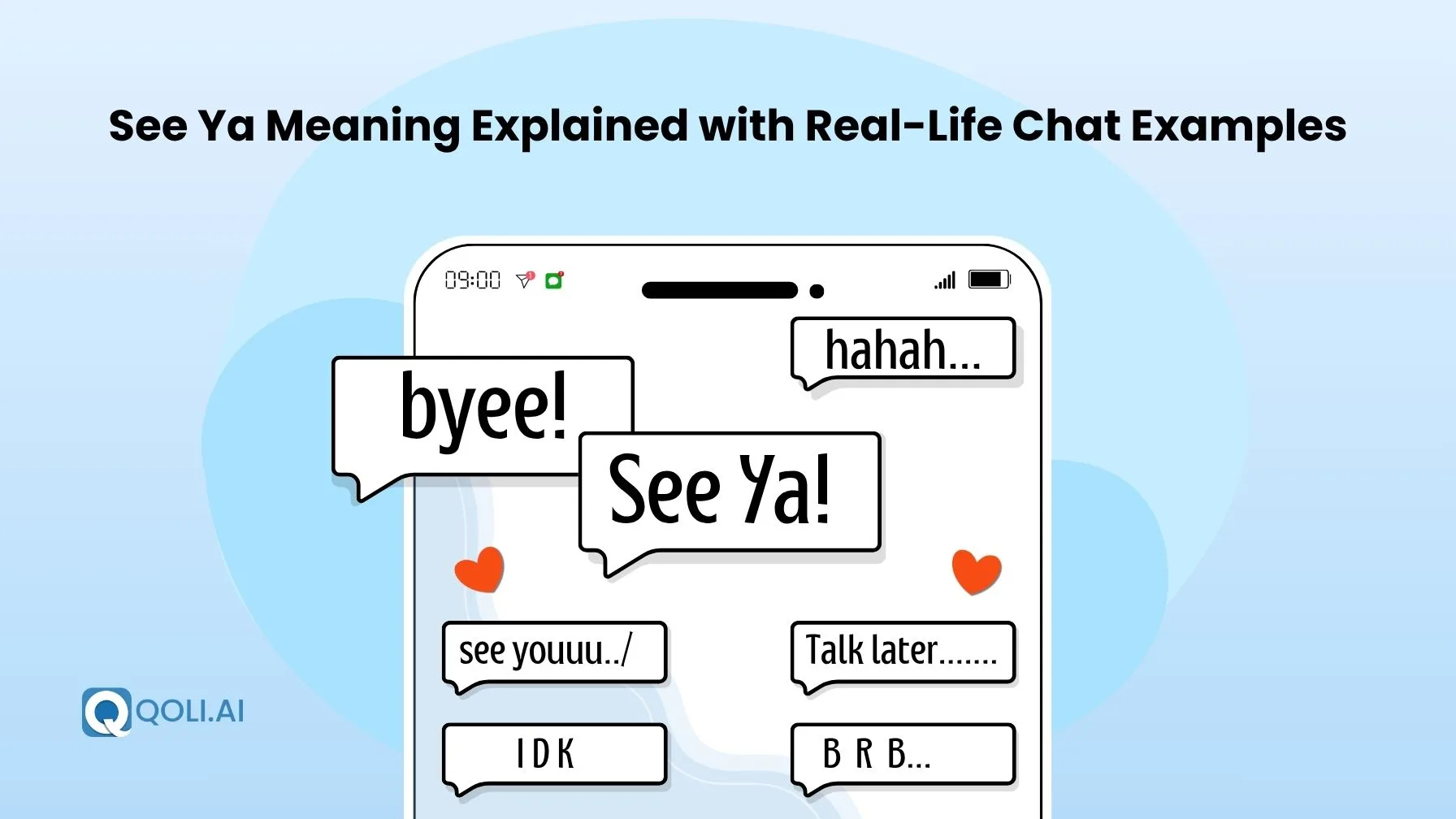See Ya Meaning Explained with Real-Life Chat Examples
Understand the meaning of 'see ya' and how it's used in casual chats. Learn different ways to say goodbye with real-life examples and definitions.
Author: Sujith Grandhi
Understand the meaning of 'see ya' and how it's used in casual chats. Learn different ways to say goodbye with real-life examples and definitions.
Author: Sujith Grandhi

Let’s say you're texting your friend about weekend plans when suddenly they drop a "see ya" and vanish from the conversation. Or maybe your teenager just walked out the door with nothing but a casual "see ya" tossed over their shoulder.
If you've ever wondered whether this counts as rude behavior or if you should be concerned, you're definitely not alone! Thousands of parents deal with this exact situation every single day.
Here's the answer: See ya isn't disrespectful teenager behavior or some mysterious internet slang. It's actually become one of the most common ways people say goodbye in our lightning-fast digital world.
Ready to decode this whole see ya thing once and for all? Let's dive in!
The see ya meaning is refreshingly simple – it's just a super casual way to say "see you later" or goodbye. Think of it like this:
When someone says see ya, they're basically telling you:
The word itself comes from shortening "see you" into something that flows off the tongue much easier. In today's English, especially American conversation, we love making longer phrases shorter and more natural-sounding.
So the see ya full form is all of “see you”!
Great question! See ya isn't really traditional slang – it's more like casual spoken English that's gone completely mainstream.
Think about it this way:
The phrase belongs in the same category as other relaxed goodbyes like:
What's really cool about see ya is that it sounds like something you'd actually say out loud, which is why it works so perfectly in texts and chats. The translation from formal to casual happens naturally when people type the way they really speak.
At the End of a Casual Conversation!
You'll spot see ya most often when conversations are naturally winding down. Here's what it typically looks like:
Common scenarios:
This works better than formal alternatives because it matches the relaxed vibe of most casual conversations. When you've been texting about weekend plans or sharing funny memes, ending with see ya just flows better than something stiff.
"Okay then, see ya!" before hanging up has become incredibly common, especially with:
The context here really matters – see ya works perfectly for casual calls but might feel weird in formal business meetings. It's all about reading the room!
Friends use see ya because it's:
This is where the ya meaning really shines. Ya is simply a shortened version of "you," making the whole phrase feel more relaxed.
Slang like sigma is also commonly used in similar friendly conversations to express attitude or confidence.
Occasionally, you might see "Fine. See ya." used with attitude, but this doesn't happen very often.
Red flags to watch for:
Here's how see ya actually appears in real-world conversations:
Example 1 - After school plans:
"Practice got cancelled, heading home early. See ya at the game tonight!"
Example 2 - Work context:
"Meeting's finally over. See ya tomorrow – hopefully it won't be as long!"
Example 3 - Playful teasing:
"You always disappear when it's time to do dishes lol... see ya"
Example 4 - Family dinner:
"Grandma's making her famous cookies tonight. Gotta go help! See ya!"
Example 5 - Study session ending:
"Brain is totally fried. Done with homework for today. See ya!"
Notice the pattern? See ya adapts to different moods and situations while keeping that casual, friendly vibe. The phrase works because it's flexible enough to match whatever energy the conversation already has.
When someone says see ya to you, here are your best options:
Quick and casual responses:
When you've made specific plans:
For family members:
Short answer: Absolutely not!
See ya is usually casual and genuinely kind. Here's how to tell the difference:
When see ya is perfectly fine:
When it might feel off:
See ya has tons of cousins in the casual goodbye family:
Super short options:
Slightly longer but still casual:
Group goodbyes:
With future plans:
All of these serve the same purpose – casual ways to end conversations without formality. Learning these variations helps you understand modern saying goodbye and how language keeps evolving.
Phrases like brb serve a similar purpose of keeping conversations flowing with minimal effort.
You can't control what happens online, but with QOli, you can monitor messages and ensure safety.
See ya is just one of those phrases that makes communication feel more human and less robotic. When your kids use it, they're not being lazy with language – they're speaking in a way that feels authentic to them.
Understanding expressions like see ya helps you stay connected with how language evolves. It's not about replacing formal communication entirely; it's about knowing when casual works better and when it doesn't.
Next time someone says see ya to you, you'll know exactly what they mean and how to respond. It's really that simple – just a friendly, casual way to say goodbye that fits perfectly into our fast-paced, text-heavy world. And honestly, there's something nice about keeping goodbyes a bit more relaxed and real.